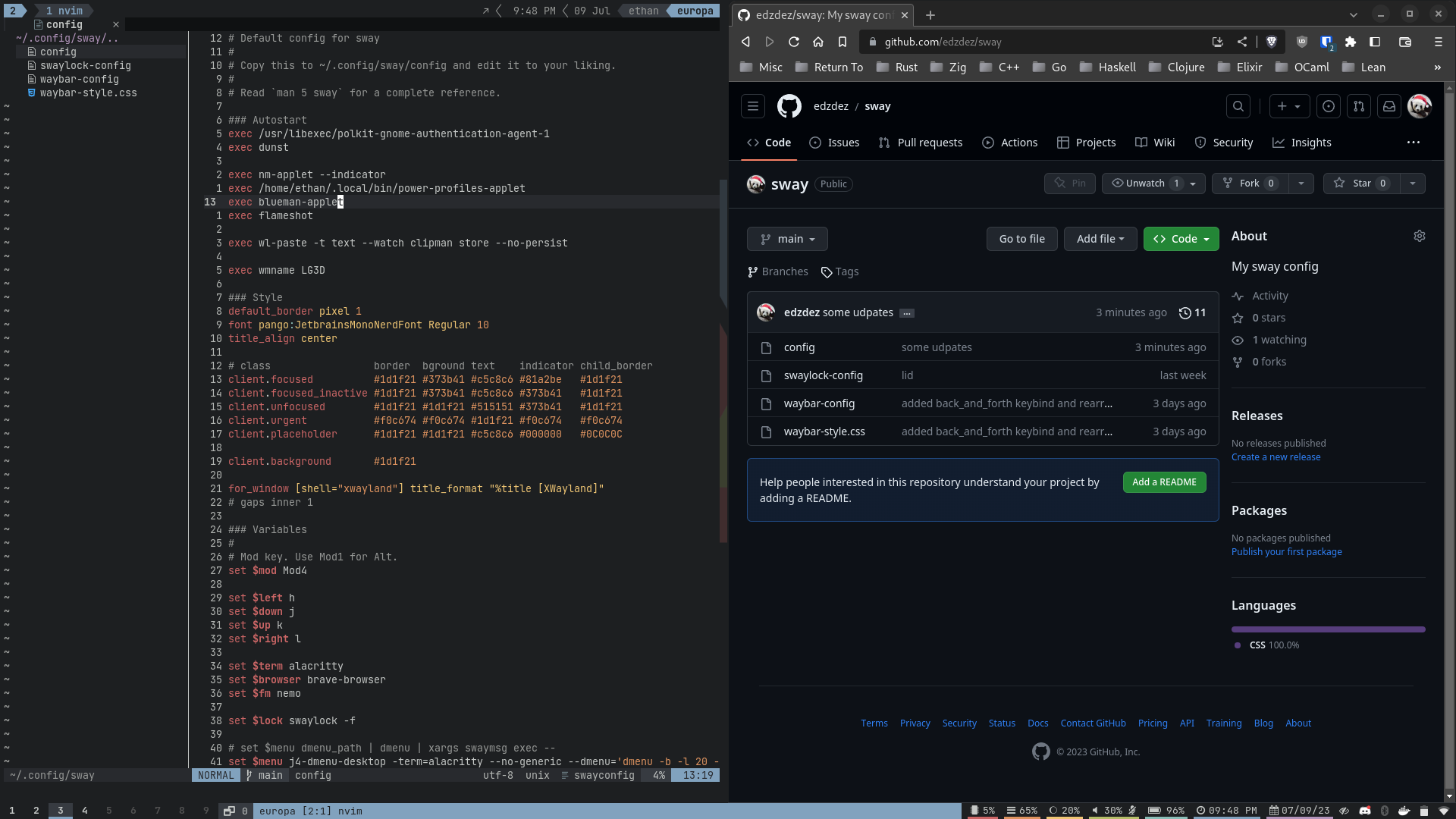
I got my first taste of tiling window managers back in the summer of 2021, when I installed sway on my laptop.
A month or so in, though, I concluded that wayland wasn’t quite yet ready for my use, leading to me switching to i3,
since I really didn’t want to be having any issues with screen-sharing, audio, or Electron / Chromium in the middle of the pandemic.
Additionally, the lack of support for Nvidia GPUs was kinda a deal-breaker, since it meant that I couldn’t use it on my desktop.
Over the next two years, I hopped back and forth between different a couple of different window managers:
first dwm, which I left due to compatibility issues (e.g. fullscreen windows appearing only in the bottom left corner of my screen and some other things I can’t quite recall);
then XMonad, which, although is fun to configure (in Haskell!), con sometimes be a bit tough to work with (especially xmobar, which I could never quite figure out);
qtile, which eased all my configurations woes with the minor caveat of draining my laptop’s battery;
and bspwm, which I still love using!
After a few mishaps with xrandr when presenting at school, however, I’ve decided to give wayland another shot!
The Good
- Outputs work flawlessly (monitors with different resolutions or refresh rates, hot-plugging, etc.)
- A lot fewer instances of random screen tearing
- Configuring the mouse and keyboard was super easy and integrated directly in
sways config file—I don’t need to search for/etc/X11/xorg.conf.d/40-libinput.conf(or whichever file it was) again! - Screen-sharing now works in most apps.
- Nvidia also now mostly works.
swaymsg(and, by extension,sway-ipc) is wonderful (though not as nice asbspc).swayhas a lot more “batteries included” than most other window managers (wallpapers, idle configuration, etc.)
The Bad
- I still have issues with Electron/Chromium-based apps.
- XWayland is kinda jank, but you have to deal with it lest you stop using a decent chunk of software.
wineis also still jank.- No global keybinds (goodbye push-to-talk).
swaylacks many of the cool compositing effects tiling window manager people like to use.
Final Thoughts
If I had to pick my top-three window managers, I’d say sway easily makes the list (along with bspwm and XMonad).
I’d recommend it to anyone who’s looking to get started with tiling window managers, as it strikes a good balance between being extensible and easily customizable.